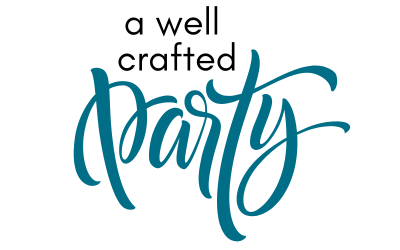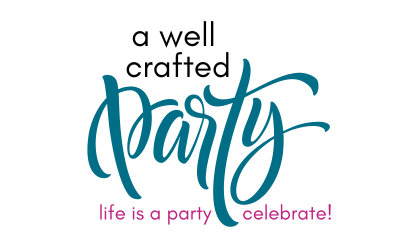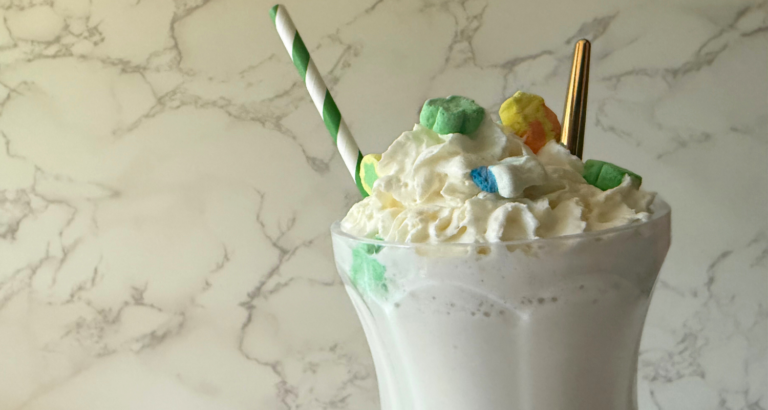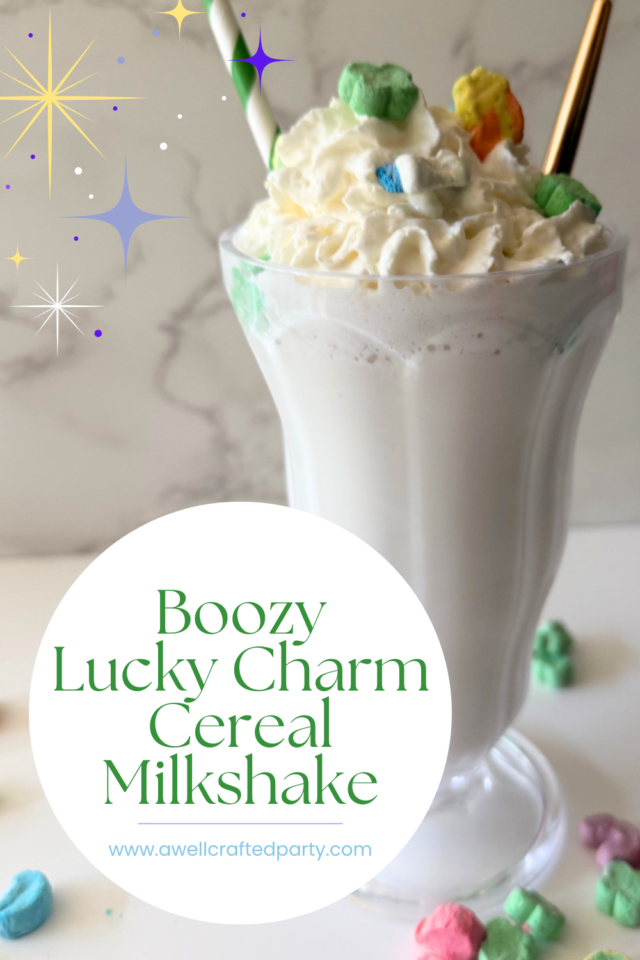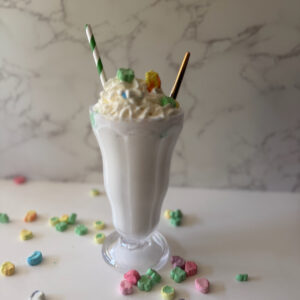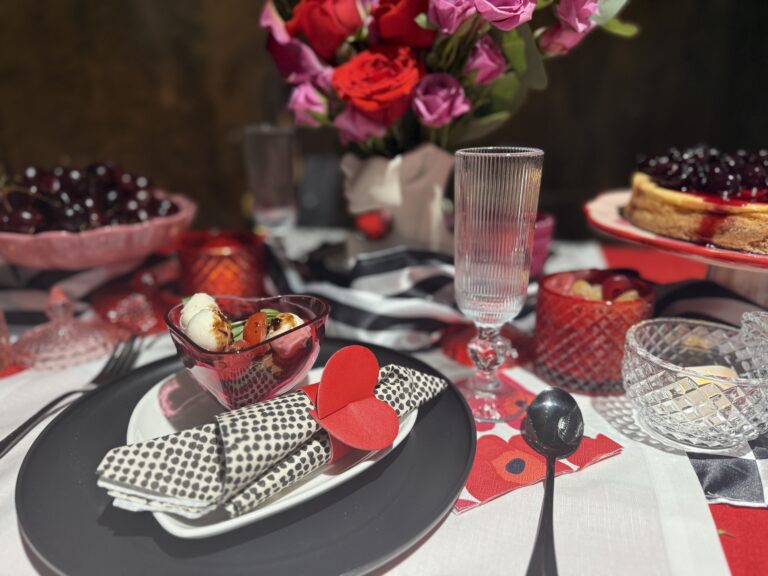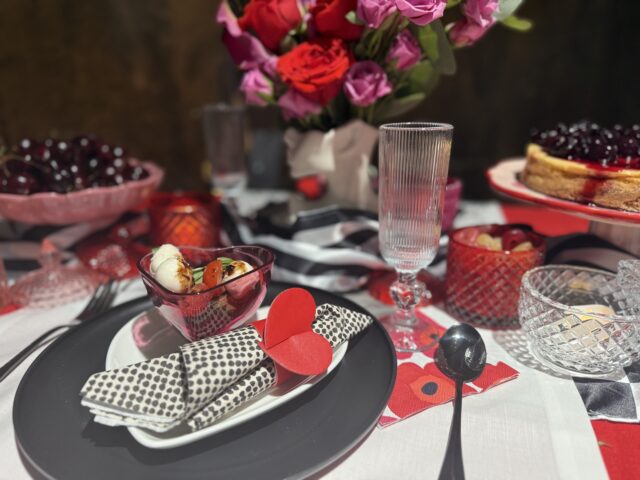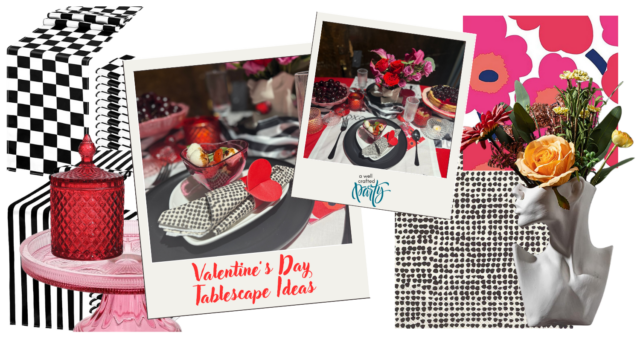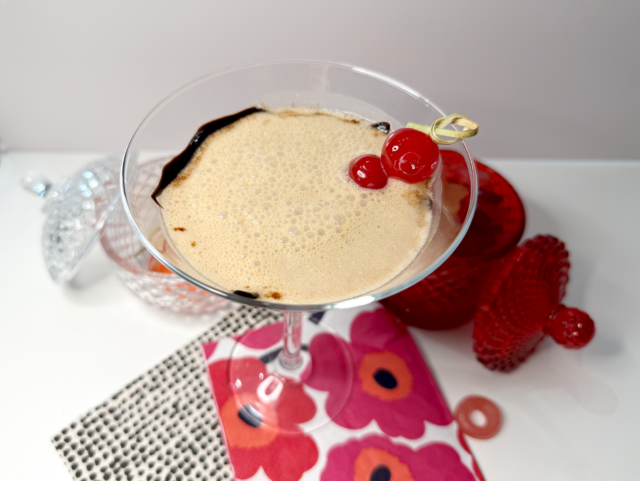I remember one Valentine’s Day when my husband took the time and effort to order flowers from a local flower shop and send them to my work. I felt incredibly special and the flowers were absolutely stunning. However, we were young and just starting out at the time, the $70 price tag made me a bit sick. While there is a time and place for amazing work by professional florists, if you are on a budget or need flowers for every day decor read on for easy tips on how to turn grocery store flowers into stunning, and affordable bouquets!
This blog post contains affiliate links. Affiliate links help this blog by providing a small portion of the purchase of items recommended to this blog at no additional cost to the purchaser. Thank you for supporting A Well Crafted Party’s conent! All affiliate links are marked with an asterisk (*).
When I’m looking for flowers for my arrangements I tend to look for a few different categories. And, because I’m a bit dramatic… the categories are as follows: The Stars, The Supporting Characters, and then the Extras or the Day-Players.

Meet the Grocery Store Floral Bouquet Cast:
The Stars: This will include 1 to 2 different types of flowers that are the focus of the bouquet. They are leading the cast of characters in this show and are beautiful to look at. Often you’ll see flowers like roses, peonies, and irises be the stars.
The Supporting Characters: These will include 2 to 3 different types of flowers that are also beautiful and interesting, but not as BIG or exciting as the stars. Roses can fit here too if you have other more interesting flowers standing in as the stars.
The Extras/Day Players: These are your filler pieces. You can use 1 to 3 different kinds usually and make a beautiful bouquet. Generally this is your area for greenery or flowers that are more of a filler like baby’s breath or hydrangeas.
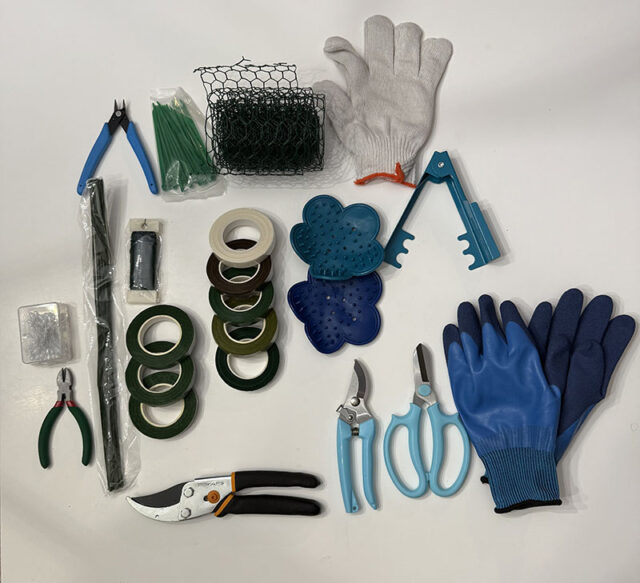
Where do you start when making a DIY Bouquet at home?
Start with proper flower prep: Remove leaves, clip the end at an angle, and get the stems in water as soon as you get home from the store if at all possible. This will allow your blooms to really pull in water and look their best.
Prep your vessel:
Ceramic Vase with Chicken Wire: I like using ceramic vases* when doing more elaborate designs because I can hide my inner workings a bit. If you want to have a lot of structure I suggest using floral chicken wire* wrapped into the vessel so you can place stems where you’d like them. I also love fun vases such as a head shaped vase* or small bud vases* to create smaller but interesting bouquets.
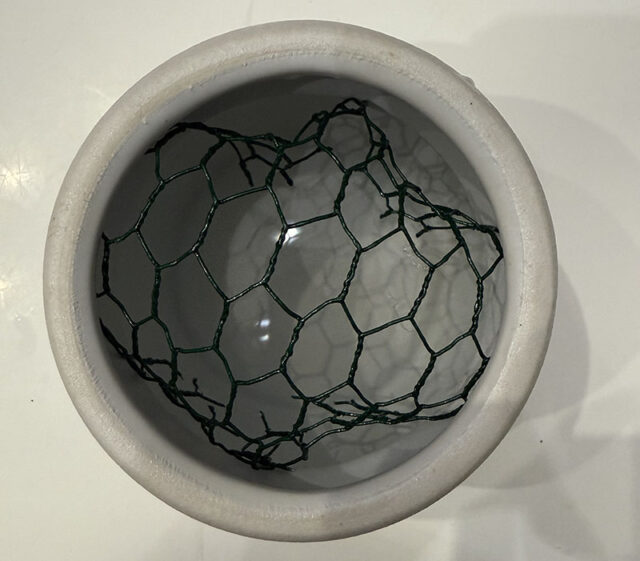
Clear Vase with Scotch Tape Grid: If you are using a clear vessel you can use scotch tape to create a grid on the top of the vase. It isn’t the most sturdy solution, but it helps!
Water: Pour in fresh water for your vessels (as in not the water it has been sitting in). I typically use the pack of flower food that comes with the grocery store flowers per directions in my water. I feel like it does help with the overall time my flowers do well. However, the best tip is to clean your water and pour fresh water every couple of days to really extend the freshness of the bouquet.
Building your DIY Bouquet
Now that you have your vessel and flowers prepped, it is time to have fun and build your bouquet. Now, you’ll get different schools of thought on the method of building, but I’ll share what works well for me. As with most things, there are many ways to get to your goal!
First, plan to clip your flowers to the size you need as you go. I use a pair of floral shears*, but a good pair of kitchen shears work fine as long as your stems aren’t too reedy or thick. As a general rule of thumb your flowers can be about as tall above the vase as the vase is tall. You can cut to different sizes to create shapes or highlight certain blooms more.

- Extras go first! Fill the base with a good layer of the filler flowers and greenery.
- Supporting characters go next. I like to work with these in odd numbers. If I want 3-5 of my stars then I’ll do 5 to 7 of my supporting character flowers.
- FInally, add in your stars! Give them the spotlight. I like adding them last as I am able to utilize the rest of the stems to help give my stars the structure they need to stand out.
Be careful to not overfill your vase with the extras and supporting cast. You can always go back and add more if needed, just get in enough to build structure and let you get your stars in the exact place they need to be.
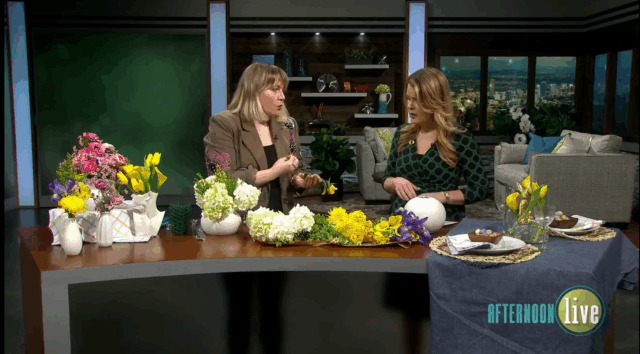
It was a blast sharing my DIY floral tips with Hannah at KATU’s Afternoon Live. It was a speed marathon floral building session, but in the end, we ended up with some beautiful home-bouquets!
Do you have any tips or tricks that I might be missing here? Share in the comments!
